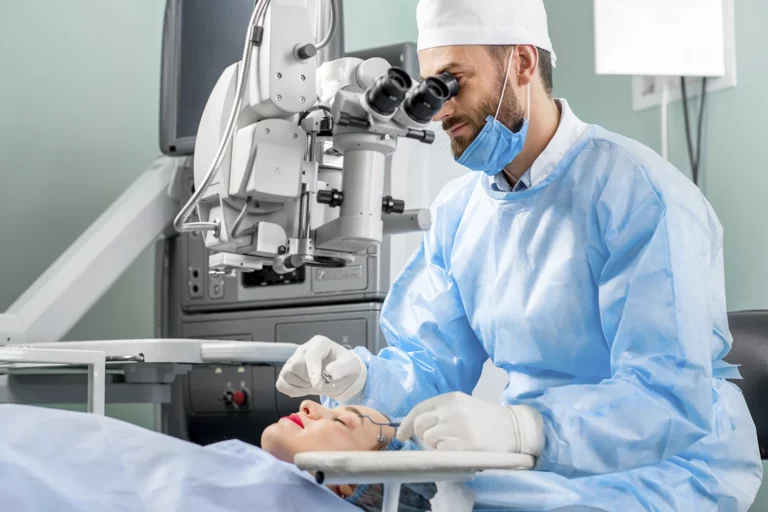Hair loss can affect women just as significantly as men, and it often has profound emotional and psychological impacts. Hair transplantation has emerged as a highly effective solution for women facing thinning or balding. This article covers the essential aspects of the procedure, its stages, eligibility, and why Royal Clinic in Turkey is a preferred destination for this transformative treatment.
Introduction to the Procedure
Hair transplantation for women is a minimally invasive procedure that involves transferring healthy hair follicles from a donor area (usually the back of the scalp) to areas of thinning or balding. While the basic principles of hair transplantation are similar for men and women, certain aspects differ due to the unique patterns of female hair loss.
The two most popular techniques are Follicular Unit Extraction (FUE) and Follicular Unit Transplantation (FUT):
- FUE: This method involves extracting individual hair follicles from the donor area and transplanting them to the recipient area.
- FUT: A strip of skin containing hair follicles is removed from the donor area, and the follicles are then dissected and implanted.
Both techniques offer natural-looking results, helping women regain not just their hair but also their confidence.
Stages of the Procedure
The process of hair transplantation for women can be broken down into several key stages:
- Initial Consultation: This is a vital step where the surgeon assesses the pattern and severity of hair loss, reviews your medical history, and discusses your desired outcomes. This phase helps determine which transplant technique will yield the best results.
- Preparation: On the day of the surgery, the scalp is cleaned, and local anesthesia is administered. Sedation may also be used for relaxation, depending on the patient’s needs.
- Extraction: For FUE, the surgeon removes individual follicles from the donor area, while for FUT, a strip of scalp is excised. The extracted follicles or strip are carefully prepared for implantation.
- Implantation: The surgeon makes tiny incisions in the recipient area and implants the hair follicles, ensuring that they follow the natural direction and density of your existing hair.
- Post-Procedure Monitoring: After the grafts are placed, the scalp is bandaged, and the patient is given specific care instructions to promote healing and graft survival.
People Eligible for the Procedure
Hair transplantation can be highly effective for women experiencing various types of hair loss. Ideal candidates include:
- Women with androgenetic alopecia: This is a genetic condition causing diffuse thinning across the scalp, making it a common reason for hair transplantation in women.
- Women with hair thinning due to hormonal changes: Pregnancy, menopause, or thyroid issues can trigger hair loss, which may be addressed through transplantation.
- Women with scarring alopecia: Scars from trauma, surgery, or conditions like lupus can cause localized hair loss, which can be treated with hair transplantation.
- Those with hair loss from cosmetic procedures: Tight hairstyles or hair treatments can lead to traction alopecia, making women excellent candidates for hair restoration.
However, women with widespread thinning or insufficient donor hair may not be suitable candidates. A thorough consultation with a specialist is essential to determine eligibility.
Preparation Before the Procedure
To optimize the success of a hair transplant, there are specific preparations to follow:
- Discontinue certain medications: Your surgeon may advise you to stop taking blood thinners, anti-inflammatory drugs, or certain herbal supplements that could increase bleeding during the procedure.
- Stop smoking and alcohol: Smoking and drinking can negatively affect blood flow and healing, so it’s important to stop these habits at least a week before the procedure.
- Trim your hair: In some cases, the surgeon may recommend trimming the donor area. However, women typically do not need to shave the scalp entirely.
- Wash your hair: Clean your hair thoroughly on the morning of the surgery as per the clinic’s guidelines.
- Medical clearance: A routine health check or blood test may be required to ensure you’re fit for surgery.
Instructions After the Procedure
Post-procedure care is critical to ensure the grafts take root and healing progresses without complications. Some essential post-operative instructions include:
- Avoid touching or scratching: Resist the temptation to touch the transplanted areas to prevent dislodging the grafts or causing infection.
- Sleep in an elevated position: Use extra pillows to keep your head elevated for the first few nights, which helps reduce swelling.
- Follow washing guidelines: Your clinic will provide specific instructions on how and when to wash your hair post-surgery, usually with a gentle, non-abrasive shampoo after a few days.
- Avoid strenuous activities: Refrain from heavy physical activities, especially those that could increase blood pressure or cause sweating, for at least two weeks.
- Stay away from heat and direct sunlight: Protect your scalp from sun exposure and extreme heat, which can interfere with the healing process.
The Result
The results of a hair transplant for women take time, but the outcome is usually rewarding. Here’s what to expect:
- Immediate Post-Procedure Phase: Minor swelling, redness, or scabbing is common in the first week. These usually resolve within 10 days.
- Shedding Phase: Around 2-4 weeks post-surgery, the transplanted hairs may fall out. This is a natural part of the process as the follicles prepare for new growth.
- Growth Phase: New hair starts to grow after 3-4 months. The full, permanent results can be seen around 9-12 months post-transplant.
Once the hair fully regrows, it blends seamlessly with the surrounding hair, providing a natural, denser look.
Why Choose Royal Clinic in Turkey?
Turkey is renowned worldwide for its high standards in hair transplantation, and Royal Clinic stands out as a leader in this field. Here’s why it’s the top choice for women seeking hair restoration:
- Highly Experienced Surgeons: Royal Clinic’s team comprises skilled and certified specialists in female hair transplantation. Their experience with women’s unique hair loss patterns ensures tailored and effective treatment plans.
- Advanced Technology: Equipped with the latest hair transplantation technology, the clinic ensures precision and success with each procedure, enhancing both the safety and results.
- Affordability: Hair transplantation in Turkey is much more cost-effective compared to other countries. Royal Clinic offers attractive packages that include not only the procedure but also accommodation, transfers, and follow-up care.
- Exceptional Patient Care: Royal Clinic prides itself on offering personalized care to each patient. From the initial consultation to the recovery phase, you receive dedicated support throughout your journey.
- Successful Outcomes: Thousands of satisfied patients, particularly women, have undergone successful hair transplants at Royal Clinic. With high success rates and natural results, Royal Clinic has earned a strong reputation.
Hair transplantation can be a life-changing procedure for women facing hair loss. By choosing the right clinic and following the proper preparation and aftercare, women can experience a natural and permanent solution to thinning hair. Royal Clinic in Turkey provides the expertise, technology, and care to make this journey smooth and successful.





